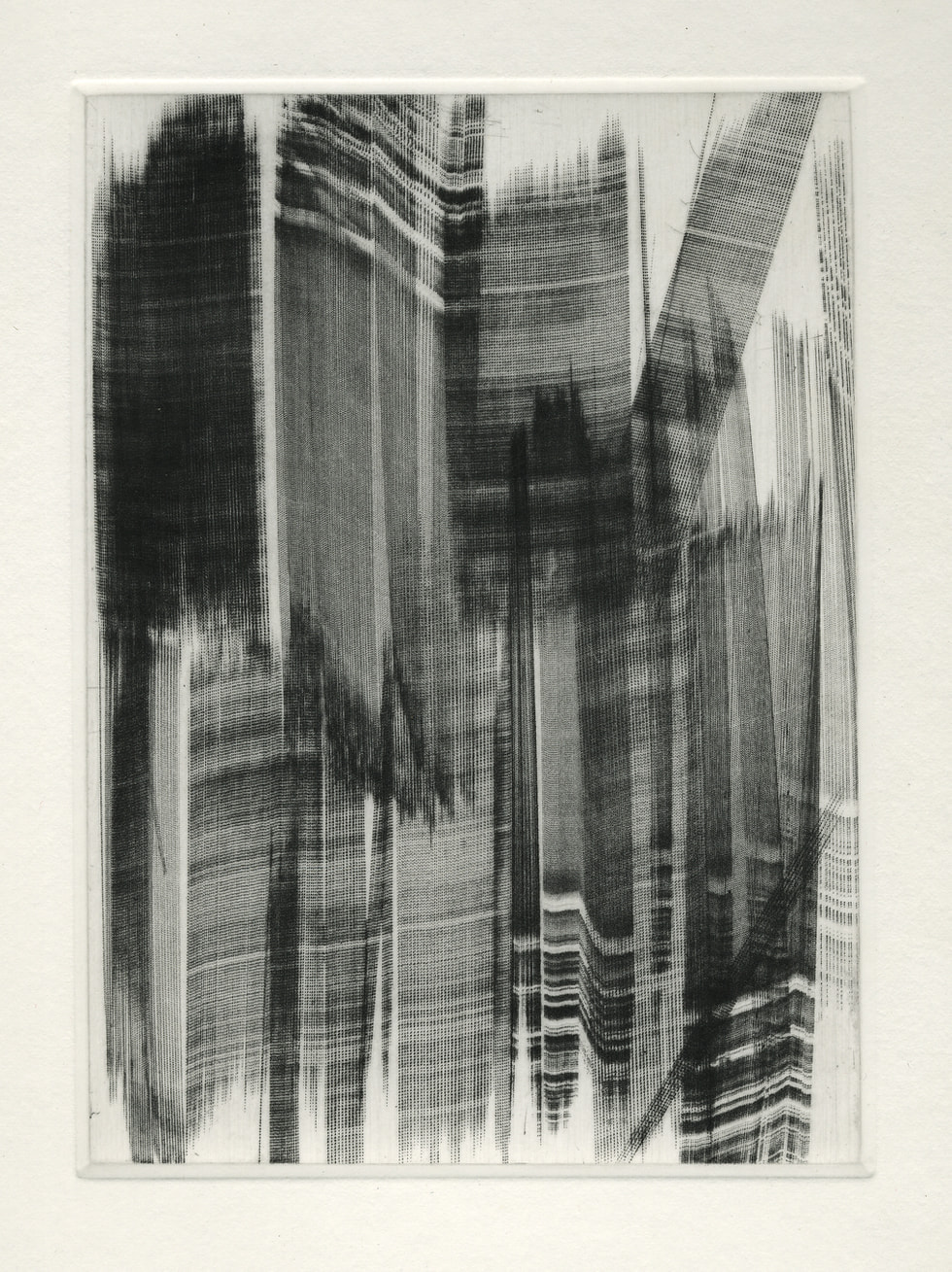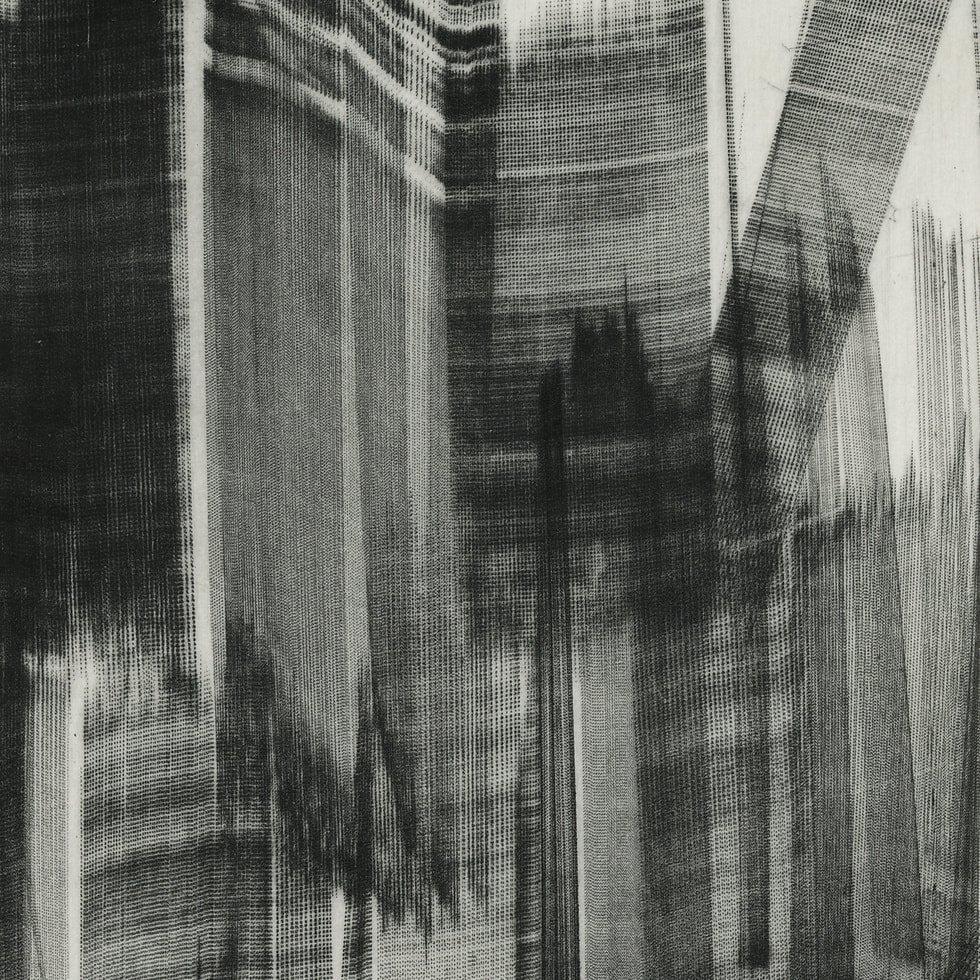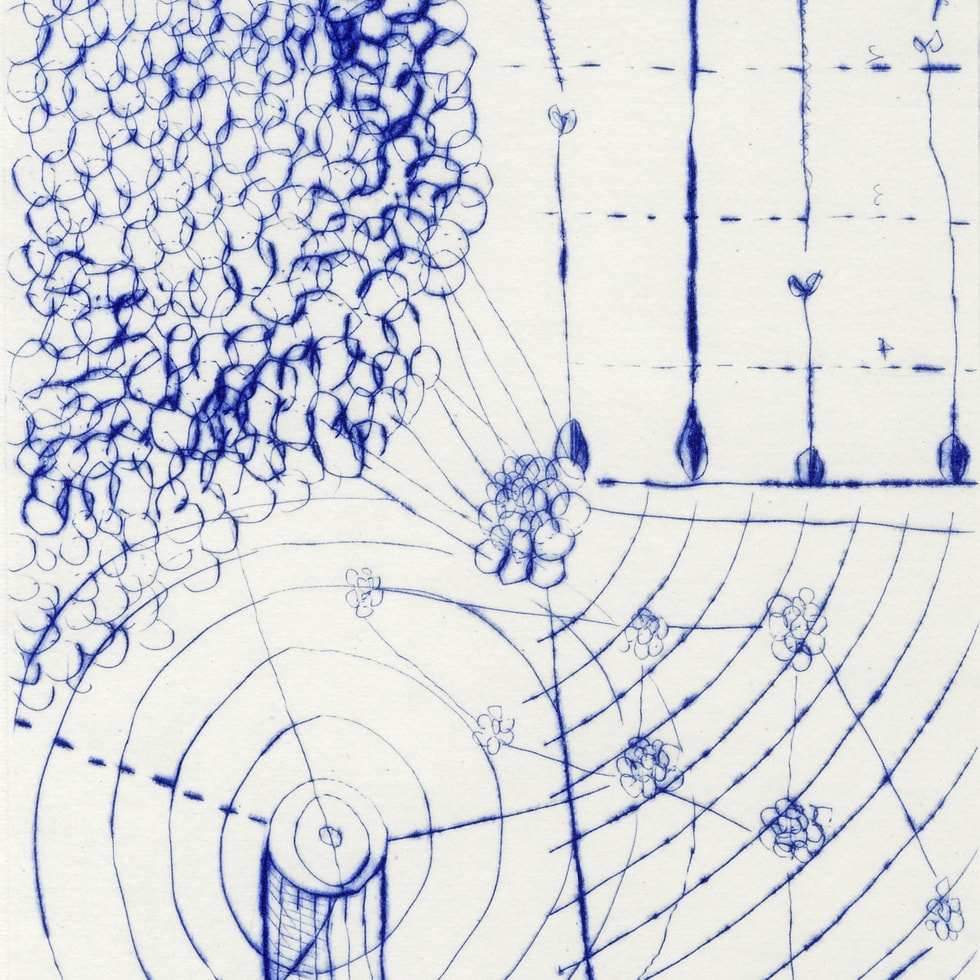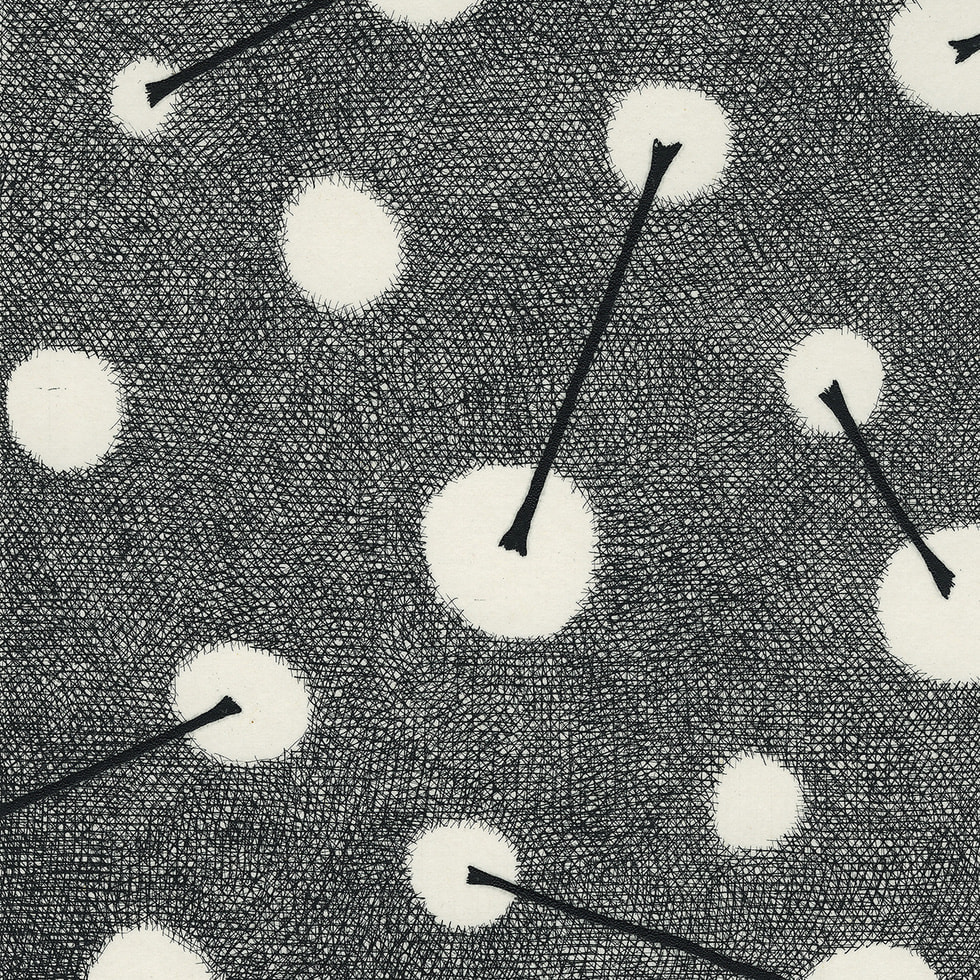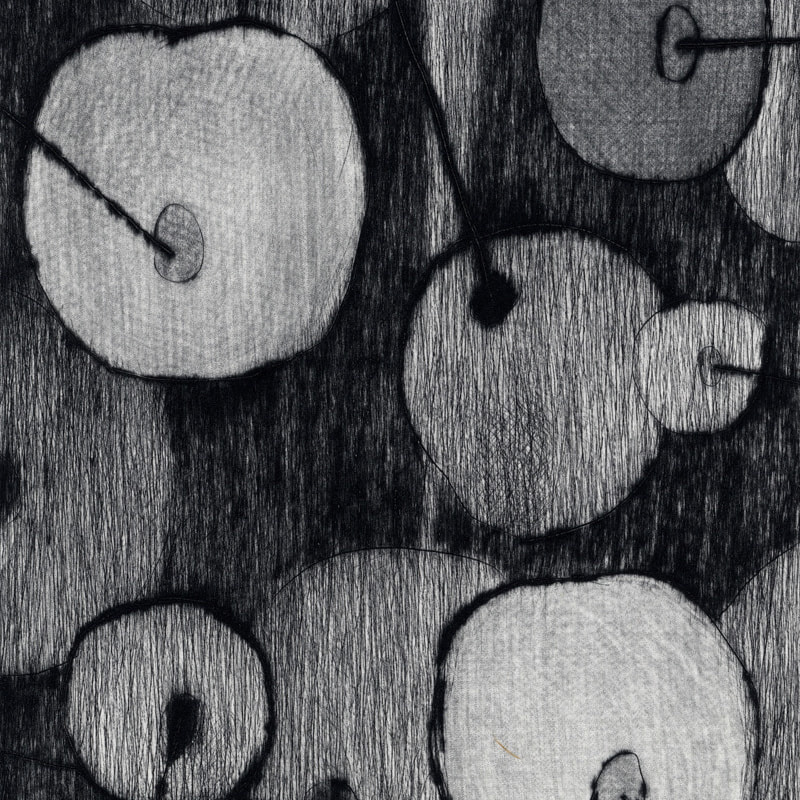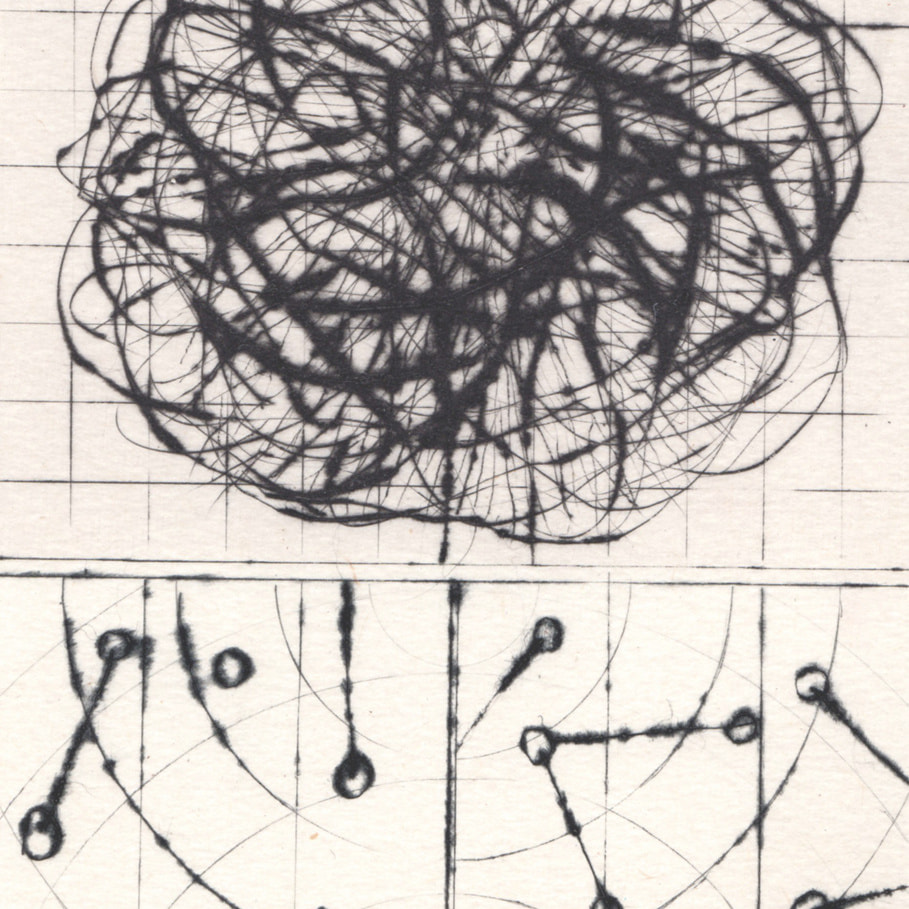‘Smaller Copperplate Prints: “Drawings” for Closer Viewing’
I cast my fishing line slowly into the river where there are no rippling waves. Slowly drawing an arc, the line connects the tip of the extended rod to the invisible world. Whenever I thrust a steel needle into the surface of a mirror-like copperplate, I recall again this scene that I so often experienced in those far off days.
It is enjoyable to use a needle in an casual, carefree manner without any real idea of what I will draw; this is like holding a fishing rod with its line in the water, when I do not know what is there, if anything. It is also part of the act of waiting for a response from the invisible world. After some time, curved lines begin to dance as if they are rippling out in waves, transforming themselves into different forms and then they bear the fruit of some forms which I had not imagined. Returning to consciousness and observing the curved forms in the copperplate, I feel that they are of some impressive scenes that I have recently seen and that have clearly remained at a relatively shallow level of my memory.
It seems that I have made these ‘drawings’ as if I had fished out images that already existed here and there in my memories and unconsciousness, into a conscious world. The majority of these images were drawn in the same way, a little bit like making jottings, so they appear to be a collection of single words and prose poems. I feel that they are indeed the fleeting images that have passed through my mind and just happened to have become fixed onto the copperplate prints.
Images of copperplate prints are produced by using a ‘plate’ so that they are different from those that are drawn directly onto paper. I cannot totally control every part, so whenever I print, even if every day, I always discover something new.
Thinking of printing, the impressions of printed images depend to a great extent on the selection of the ‘paper’. Whilst pieces of paper can seemingly be the same; each paper possesses its own characteristics. It requires a great deal of experience for an artist to select the right paper for an image that he wants to deliver with his print work. Paper can be soft or hard; it is by touching the paper that you can recognise its characteristics. For these exhibited ‘drawings’ it was when I was creating them that I chose the colour and paper that I wanted to use. The selection was done rather intuitively when I felt that ‘that’s a good colour!’. These colours and papers, chosen from outside my usual range of selection, indicate that there are even further possibilities for the printed images.
To draw freely without any fixed idea. To enjoy something unexpected that has emerged naturally. Around the rigid lines there always exists something soft like a cushion that contains potential; if I say it in Japanese, perhaps it is ‘ma’. Now I would like to accept something that comes naturally from ‘ma’ and to slowly give it a form, as swaying time is necessary, but cannot last for ever.
